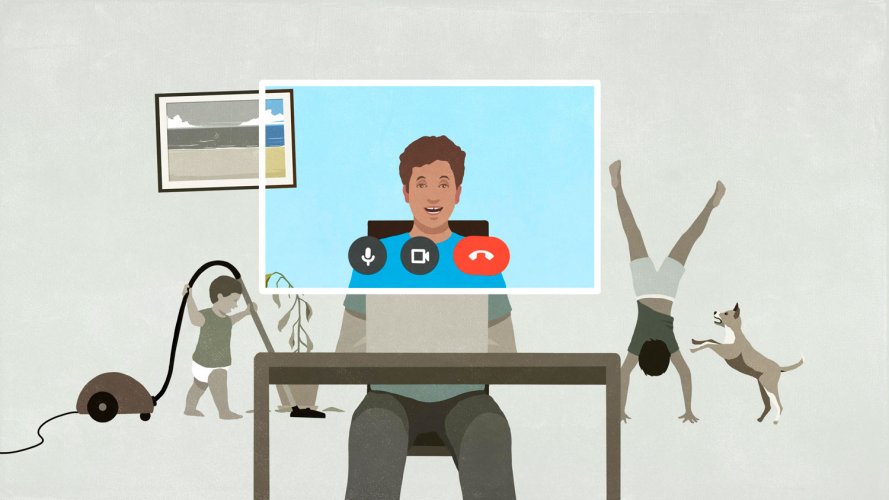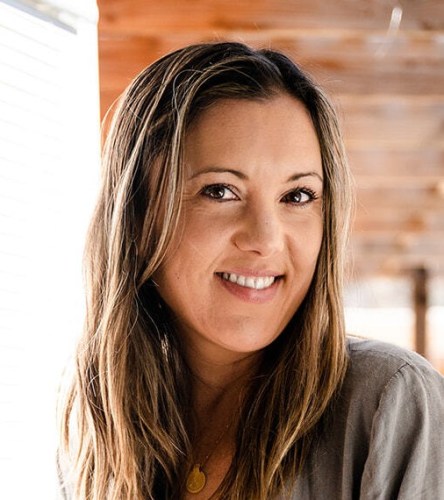Here’s How Experts Measure Happiness at Work (So You Can Too)



Workplace happiness sure sounds like a squishy thing to measure, but experts at IBM and Salesforce have it down to a science.

Carolyn Warsham
In our new world of work, execs know they have to embrace the proverbial cat running across the computer keyboard or the sticky toddler waddling in the background of a video call. But that is not enough when it comes to workplace happiness. The U.S. Bureau of Labor Statistics continually reports record-breaking numbers of employees quitting their jobs. ZipRecruiter finds that the average job seeker sees 50% more openings than they did in February of 2020.
During the coronavirus pandemic, tolerance for being unhappy at work has decreased considerably. And companies are finding that fostering employees’ happiness requires a complex cocktail of roughly four main ingredients: work-life balance; opportunities to learn and grow; solid, empathetic managerial support; and strong connection to the community, culture, and values of their workplace.
Put in more holistic terms, humans need to feel nurtured in body, mind, and spirit to thrive in the workplace. That’s a tall order for employers that are new to the concept of workplace wellbeing. But if they want to successfully attract the next generation and retain the current one, they’ll need to invest in all three across the organization — and define the KPIs to back them up.
“This will be table stakes,” said Nickle LaMoreaux, IBM’s chief human resources officer. “We will all need to do it well because talent will self-select. And I think this is going to be a key component.”
There’s no existing playbook for companies as they begin to define their new employee value proposition. Enlightened HR execs are tasked with winning over both the C-suite — which may be more comfortable with traditional resource investments such as product development, intellectual property, and brand marketing — and a talent pool with new expectations of their employer.
This article appears in Vantage Point, a Salesforce magazine



New on-the-job training targeting workplace happiness
Operationalizing something as lofty as workplace happiness and wellbeing requires making it tangible to middle management. That’s one reason IBM rolled out empathy training to tens of thousands of managers. As of last December, 90% of IBM’s managers had taken the empathy training, LaMoreaux says.
The company’s effort to fast-track its managers’ fluency in all things social and emotional points to a larger trend that favors developing soft skills, says Jesse Sostrin, global head of people leadership development at Salesforce.
“Upskilling capabilities for things like data visualization or bot building are still important,” Sostrin said. “But so are the skills that keep people feeling safe and connected.”
These skills involve learning to bounce back better from adversity and cultivating resilience, increasing your emotional intelligence and creating better connections with people, and articulating your values so you can prioritize based on what’s important to you and your team.
“Those skills have been evergreen, but they take on such a different meaning now post-pandemic because they’re so important — they’re now business essential,” Sostrin said.
At Salesforce, Sostrin’s team recently relaunched an internal program called High Impact Teaming, which aims to build important soft skills across the organization. Teams at Salesforce can sign up for workshops on inclusivity, empathy, and creating team agreements that ensure everyone is on the same page about how they behave and collaborate in our new digital-first world of work.
And in an even larger effort, Salesforce recently opened the doors to its Trailblazer Ranch, a new gathering place for employees to experience the culture in a new way. Here, they’ll learn from one another and get trained in the company as they connect with each other and nature.
Staying connected
Meanwhile, back in the new and mostly virtual workspace, connection needs to be redefined. Companies can set up Slack channels for employees to get what they need from tech support and their teams. But there’s a deeper, more human level of connection that needs to be replaced as well. IBM, for example, empowers all employees to serve as support resources — not only for tech, but for life in general.
LaMoreaux recalls one employee who told the company’s “Covid support” Slack channel that her 7-year-old was homeschooling and needed help with math. One of her colleagues volunteered to get together on a video call to help.
That’s one way IBM uses digital technology to bring together intimate yet optional peer cohorts to back up its trainings. “A lot of the magic happens” when peers come together in this safe space, said LaMoreaux. It’s also become a breeding ground for updates to widely available training, ensuring the company stays relevant to emergent issues, she said.

True human-centricity
In truth, workplace happiness initiatives bleed into every aspect of operations. Case in point: Early this year, worldwide consultancy Deloitte announced it would spend an additional $1 billion on work-from-home technology, concierge mental health services, more paid time off, and even salary increases.
There’s also a reset happening around what “going to work” looks like. Salesforce continues to experiment with “Async Week,” a highly rated initiative in which all employees — from senior leaders to individual contributors — are encouraged to cancel all meetings and find other ways to collaborate as they free up time for deep work. Meanwhile, IBM is dismantling the traditional 9-to-5 paradigm.
“All too often, companies are coming up with where and when their work happens instead of starting with the work, asking what it dictates, and then setting the schedules around that,” said LaMoreaux.
She said teams need to reevaluate where work happens by asking these questions: What does the team need to do together? What can they do apart?
The new KPIs focused on workplace happiness
With these sea changes in values and ways of working, new KPIs must follow. But in the words of LaMoreaux, “There’s no silver bullet metric for overall workforce wellbeing.” IBM looks at the triangulation of engagement, attrition, and health plan data. Sostrin underscores the importance of engagement, which “leads to all kinds of things like quality of work, impact, intent to stay, and reduced attrition.”
But how to track such things? Regular pulse surveys help IBM monitor sentiment on a wide range of issues, from stress and inclusivity to feeling connected to company values.
If attrition levels are going up, it’s time to look more deeply at exit interview data. Perhaps employees are seeking more serious interventions, such as seeking a therapist or specialist to address wellbeing. LaMoreaux said that companies might ask, “Is there anything we can do to make sure employees aren’t migrating there unnecessarily?”
While more frequent pulse surveys can be useful for measuring workplace happiness and global events in real time, Sostrin suggests there’s a limit to how many an organization can send. “It’s just like a budget,” he said. After you’ve “spent” people’s capacity to answer questions, organizations need to dial it back to prevent survey fatigue.
For a more holistic way to track how employees are doing, Sostrin likes to tactically focus on culture. Leaders can do this by looking at everything from the big things happening at an organization—company meetings and company-wide survey trends over time—to the small things, including the efficacy of one-on-one meetings and team operating agreements. All of these elements, Sostrin said, create a culture that has the power to either attract or repel employees.
Evangelizing new KPIs
Many execs are quick to understand the urgency of investing in empathy training and expanding health benefits. Others still use the old paradigm of investment in areas like marketing or infrastructure, which often garner more immediate profits.
How can an enlightened exec get peers to sit up and listen? Sostrin notes that you can present CEOs with the math on how these programs mitigate attrition. For example, most execs know that the cost of losing one employee ranges from 50% to 250% of their annual salary. But many might not realize that when leaders make their employees feel valued, the probability of employees leaving the organization decreases by 27%.
It’s a lot to chew on. And if you’re overwhelmed by the prospect of improving upskilling, workplace happiness, and the related KPIs at your company in one fell swoop, the experts want you to know that the first step is having conversations around the available tactical steps to see what’s possible now and what needs to be planned for the future. Get the inertia going. Start to evangelize new ideas. Try something small. And you may be surprised how quickly impactful change can happen.
Lead with empathy in challenging times
Learn strategies for communicating with your team, fostering connections and building camaraderie.


























